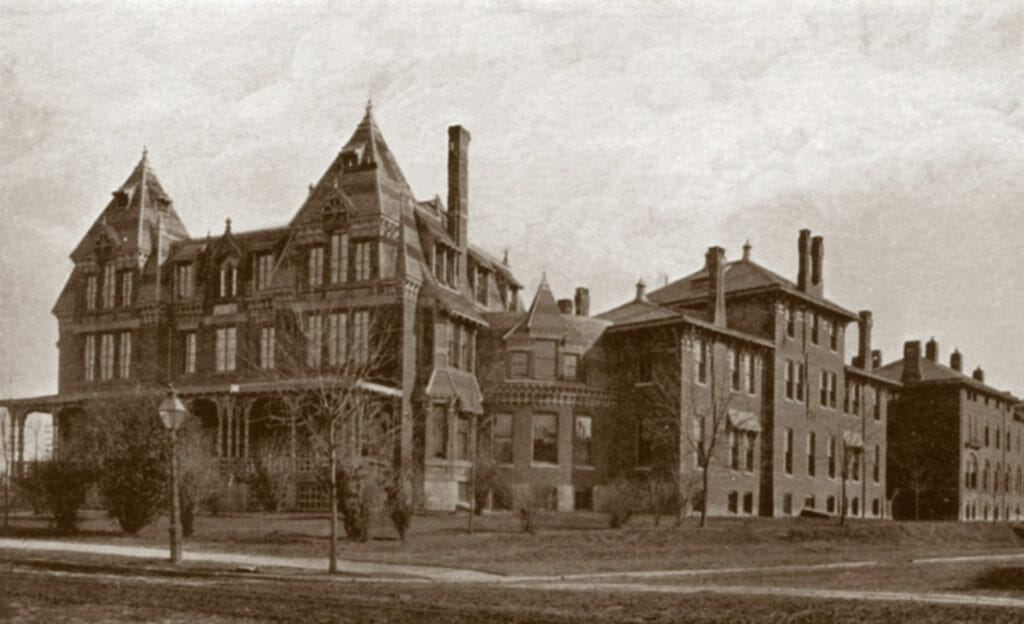
Any Medicaid raise makes a difference to all nursing homes in today’s tight financial environment. But for one historic nonprofit Pennsylvania facility, a final rate determination this month made the difference between preserving a 146-year legacy of service and selling to a for-profit buyer.
The board of the Inglis Foundation, the operator of the 252-bed Inglis House outside of Philadelphia, said Tuesday that it had canceled a planned $22 million sale. The decision was spurred by the January posting of new Pennsylvania Medicaid rates for individual nursing homes.
The state’s lobbying associations won a historic 17.5% Medicaid increase last year, but as the new pay kicked in, Ingils learned it had won nearly double that rate through updated calculations.
Under a new funding formula, Inglis’ high-needs population netted it a 34% increase — to $580.24 per day, according to the Pennsylvania Department of Human Services.
One state provider association called the turnaround “an incredible success story.” The new pay rates reflect higher base Medicaid pay, new requirements of the state’s Managed Care Organizations and Inglis’ status as a special rehabilitation facility that serves a large population with neurological or neuromuscular diagnosis and severe functional limitations.
Founded in 1877, Inglis specializes in services to adults with severe neurodegenerative physical disabilities resulting in paraplegia and quadriplegia. All of its residents, ages 21 to 90, use wheelchairs. Common diagnoses include neurological and musculoskeletal disorders such as multiple sclerosis, cerebral palsy and spinal cord injury.
The story of Inglis House, a foundation-backed provider that also offers an array of community services, appears to be playing out exactly opposite of a similar story in Cleveland last year.
That was when the126-year-old Eliza Bryant Village announced it was closing its 99-bed skilled nursing unit due to “unsustainable” conditions exacerbated by the pandemic and Medicaid subsidies that failed to keep up with soaring care expenses.
Less than two years earlier, Eliza Bryant President and CEO Danny R. Williams had warned that the facility was in crisis mode, and the state did little to shift its payment metrics before the unit’s closure.
In the case of Inglis House, residents in September protested the Inglis Foundation’s plans to sell to Tryko Partners, a growing real estate investment trust that owns nursing homes primarily on the East Coast.
That proposal came after the state had landed on the budget deal that included 17.5% more for nursing homes, an amount Inglis leaders thought would still be too little to sustain them. This week’s apparent windfall led the nonprofit’s board to change course.
Both tales seem to illustrate dramatically the difference appropriate payment rates play in a facility’s overall success and longevity.
“We are incredibly grateful that the decision to substantially increase and formally establish minimum reimbursement rates has profoundly changed the future for not just Inglis House, but for numerous other facilities across Pennsylvania,” Inglis President and CEO Dyann Roth said in a statement to McKnight’s Wednesday. “We look forward to working with PHCA, Leading Age and the other strong advocates to keep the needs of these citizens a priority for the state.”
Before the relative windfall was realized, operating losses had averaged $15 million annually for the last five years.
Inglis House is used to operating in strapped conditions. It was formed in honor of Annie Inglis, who was disabled and later died from scarlet fever. According to the foundation’s website, she gave her mother a $1 gold coin to start fundraising for a facility for children like her; that coin was sold over and over again to open the original Philadelphia Home for the Incurables in 1877.
Today, Inglis is one of 10 organizations recognized by the National Multiple Sclerosis Society as a Center of Excellence in Long-term Care, a mission it is now able to extend into 2023, and perhaps well beyond.




